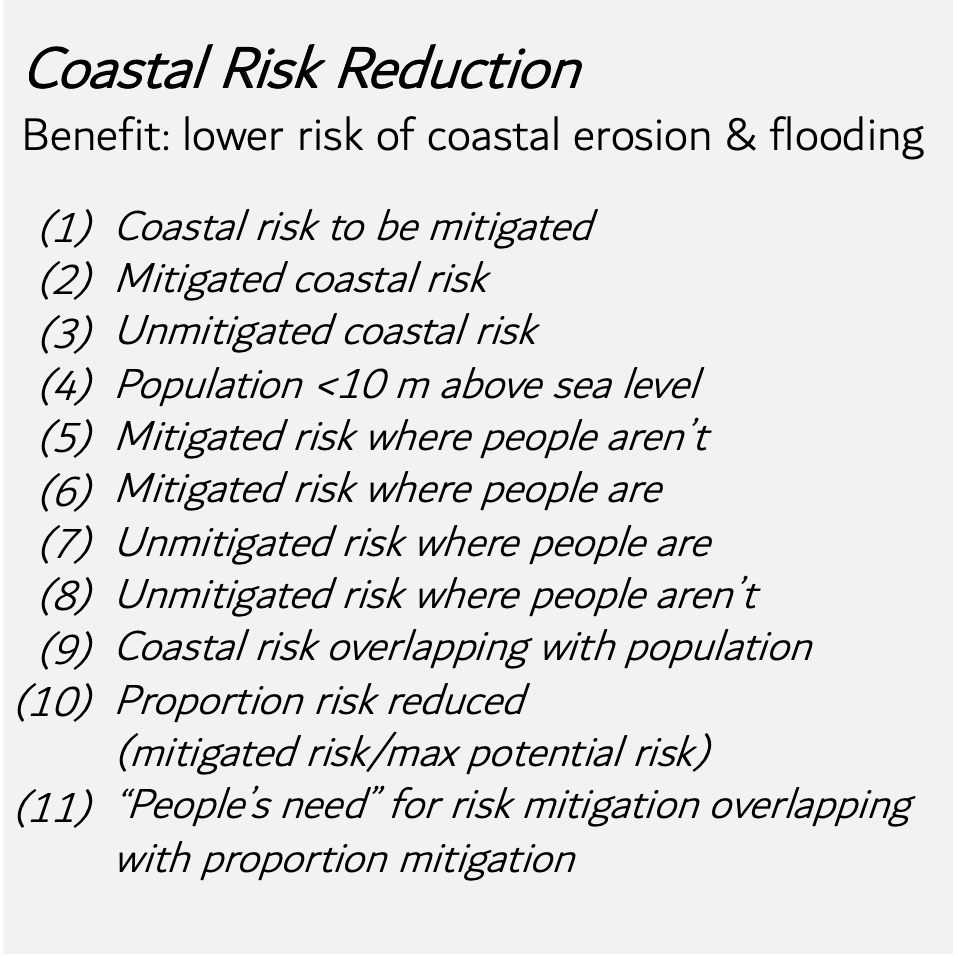The maximum potential (mitigation) benefit for coastal risk reduction is the physical exposure to coastal hazards (based on wind, waves, sea level rise, geomorphology, etc) that requires attenuation – which can be thought of as the risk in the absence of coastal habitat like coral reefs or mangroves. People living either nearest to the shoreline or between 0 and 10 m above sea level are considered to be the population exposed, since these are the people most susceptible to flooding, especially with sea level rise. The potential benefit provided by nature is the degree to which that risk is mitigated, and nature’s contribution is the proportion of that coastal storm risk reduced by ecosystems.
The potential benefits provided by nature, which are often called “ecosystem services” (but should be thought of as the potential supply of a service, and only truly becomes a service when combined with human demand for the service) may be measured in terms of kilometers of coastline protected or the change in risk index resulting from the presence of coastal habitat. We emphasize that a proportional representation of nature’s contribution to providing potential benefits is important to track differences or changes across space and time; as realized benefits provided by nature could increase alongside (or due to) increases in maximum potential benefits or population exposed, though nature’s contributions may remain the same. That is, if climate change puts more coastline at risk, a constant proportional contribution of nature would result in higher levels of the corresponding realized benefits, coastal risk mitigation, even if conditions for people (in terms of coastal hazards) deteriorate. The relative proportion of nature’s contribution, along with people’s needs, especially for the most vulnerable people, are more useful metrics than realized benefits alone when considering change across several variables at once (stressors, people, and nature), as they reveal where and when nature plays a key role in delivering benefits.
We also examine the benefits not provided by nature, or benefit gaps, people depend upon for their well-being (which could be filled to some extent by other forms of capital, e.g., infrastructure), and the populations exposed to changes in benefit gaps for each NCP in future scenarios. We use unmitigated coastal risk (risk remaining after the attenuation of waves, wind and storm surge by any coastal habitat) as the measure of the benefit gap for coastal risk reduction. This benefit gap results in the outcomes people will actually face and perceive – coastal hazards, in this case— and is what will determine people’s well-being, the visible component of NCP. It does not by itself, however, reveal the role nature plays in contributing to that well-being.



